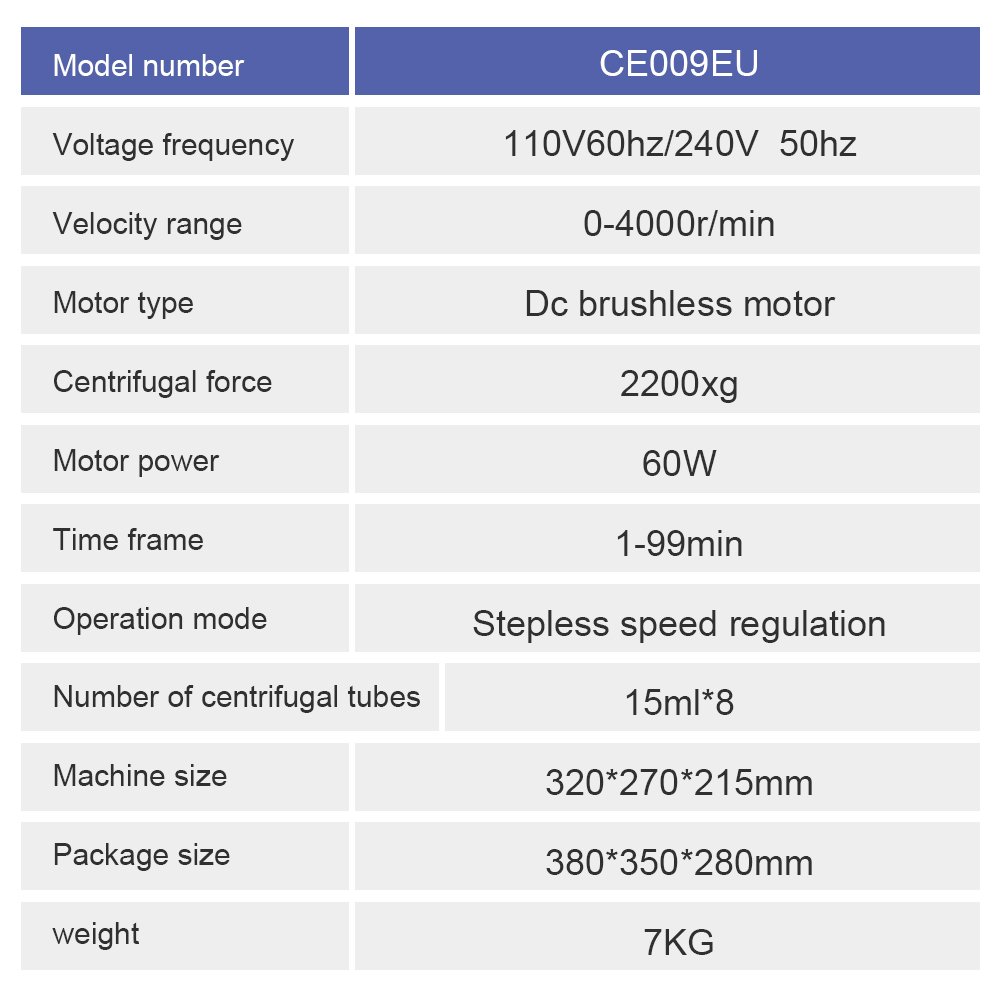Low-speed centrifuge is a laboratory instrument designed to separate components of a liquid sample (e.g., blood, cells, or chemical suspensions) by applying controlled centrifugal force at relatively lower speeds (typically 1,000 to 5,000 RPM).
1:Speed Range: Operates at lower RPMs compared to high-speed or ultracentrifuges, making it suitable for delicate samples.
2:Applications:Separating blood components (plasma/serum).Isolating cells or precipitates in biology/biochemistry.Clarifying liquids in pharmaceuticals or environmental testing.
3:Gentle Processing: Minimizes damage to sensitive samples (e.g., live cells or fragile proteins).
4:Versatility: Compatible with various tube sizes (e.g., 15 mL, 50 mL conical tubes) and swing-bucket/fixed-angle rotors.
5:Energy-efficient and cost-effective for routine separations.
6:Compact size, ideal for clinical or small labs.
7:Low maintenance due to simpler mechanics than high-speed models.
Equipment is essential in medical, research, and industrial labs where gentle yet effective separation is required.
